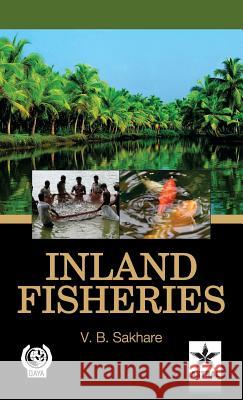Inland Fisheries » książka
Inland Fisheries
ISBN-13: 9789351240778 / Angielski / Twarda / 2012 / 336 str.
India has made phenomenal progress in inland fisheries sector. Major inland fisheries resources of country comprise 1) capture fisheries of rivers, lakes and estuaries 2) culture fisheries of the ponds and tanks and 3) capture-cum-culture fisheries of reservoirs and oxbow lakes. According to various reports, 80-85 per cent of our total inland fish production comes from capture fisheries resources. Development of inland fisheries as a means to increase the availability of proteinous food for the masses and to create employment opportunities for a wide section of our society has long been recognized. The last fifty years have witnessed concerted efforts by the central and state governments to increase productivity from inland water bodies, mainly through the development of a number of scientific management norms for different aquatic biotopes. The indigenous technologies developed at various Research and Development organizations have played a vital role in ushering in the fish boom in the country. The book entitled "Inland Fisheries" has been written with the intention to meet the needs of fisheries graduate as well as post-graduate students. This book is also a very important document for the fisheries scientists and professionals engaged in inland fisheries research. The book is divided in thirty chapters. The language of the book is simple and lucid. The subject matter has been explained with the help of finely drawn, simple and well labelled diagrams. Wherever necessary, tables have been given for clear understanding of the subject.
India has made phenomenal progress in inland fisheries sector. Major inland fisheries resources of country comprise 1) capture fisheries of rivers, lakes and estuaries 2) culture fisheries of the ponds and tanks and 3) capture-cum-culture fisheries of reservoirs and oxbow lakes. According to various reports, 80-85 per cent of our total inland fish production comes from capture fisheries resources. Development of inland fisheries as a means to increase the availability of proteinous food for the masses and to create employment opportunities for a wide section of our society has long been recognized. The last fifty years have witnessed concerted efforts by the central and state governments to increase productivity from inland water bodies, mainly through the development of a number of scientific management norms for different aquatic biotopes. The indigenous technologies developed at various Research and Development organizations have played a vital role in ushering in the fish boom in the country. The book entitled "Inland Fisheries" has been written with the intention to meet the needs of fisheries graduate as well as post-graduate students. This book is also a very important document for the fisheries scientists and professionals engaged in inland fisheries research. The book is divided in thirty chapters. The language of the book is simple and lucid. The subject matter has been explained with the help of finely drawn, simple and well labelled diagrams. Wherever necessary, tables have been given for clear understanding of the subject.











